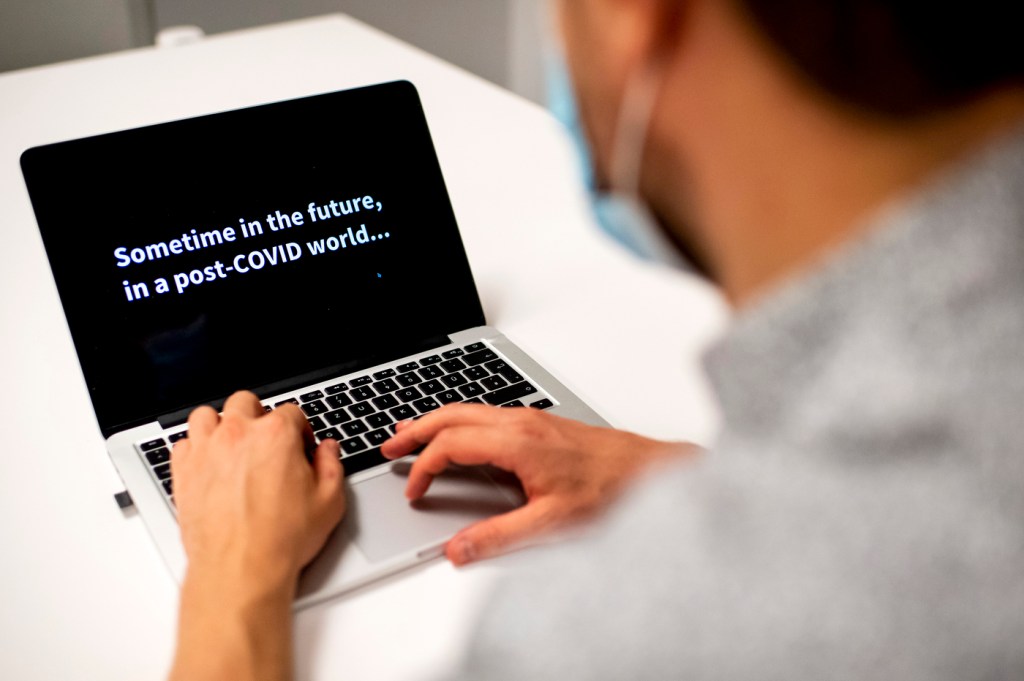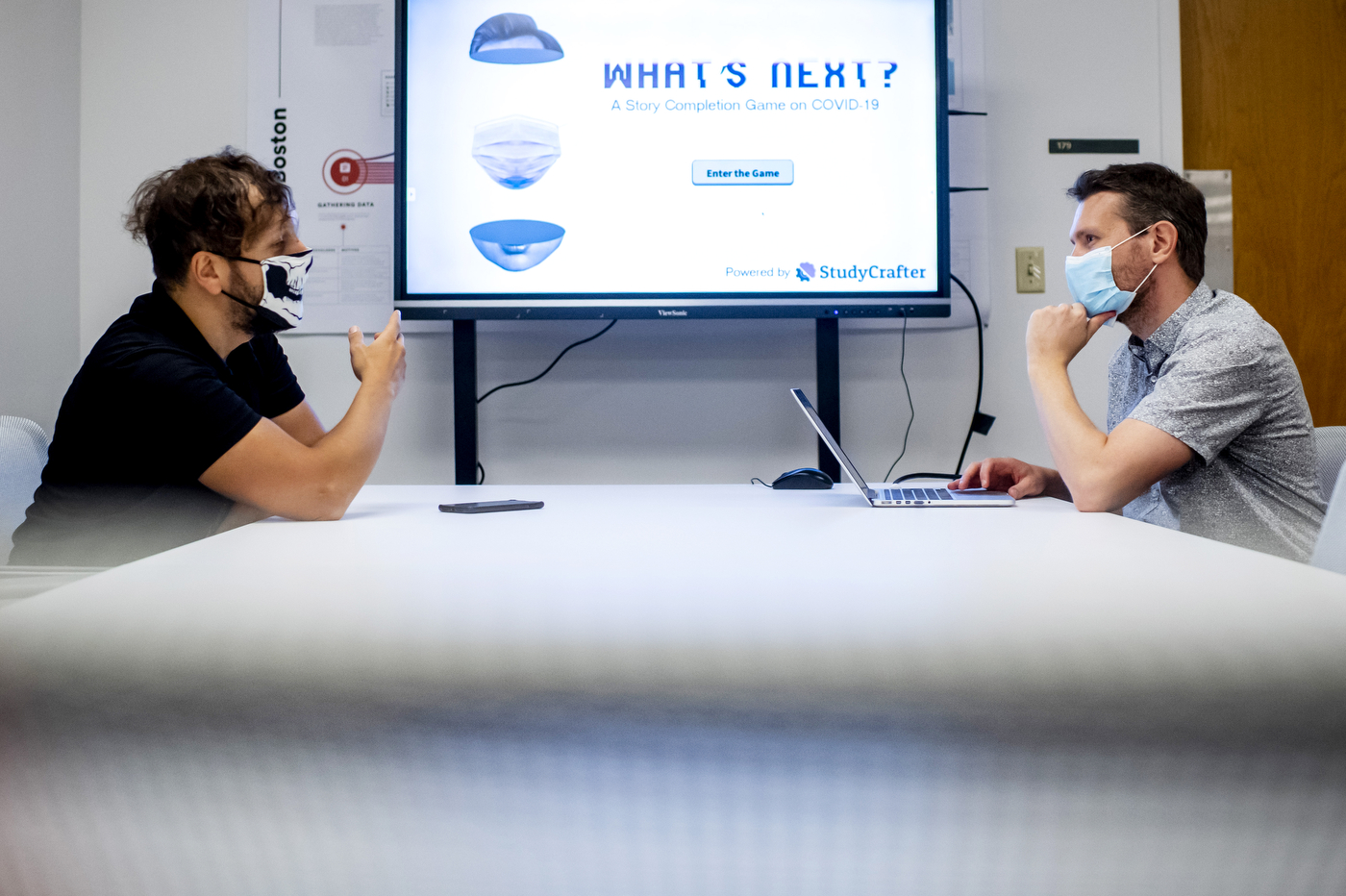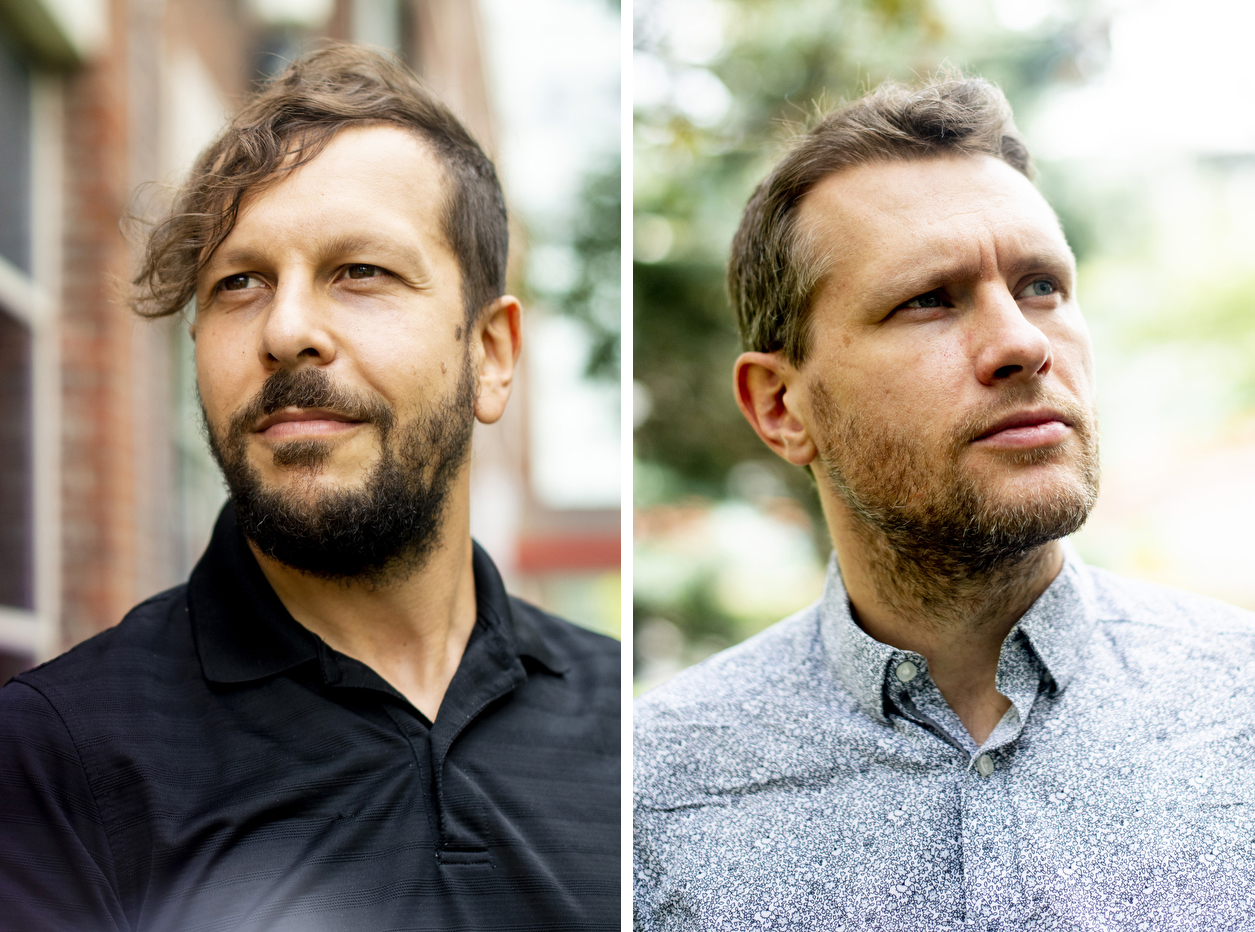What will the world be like after the COVID-19 pandemic? These researchers are using game design to find out.

In the midst of a pandemic that has exceeded a staggering toll of 200,000 deaths in the United States alone, and has coincided with wildfires, hurricanes, and widespread protests for racial justice, it can be difficult to look ahead and imagine what the world might look like after 2020.
Two researchers from Northeastern’s College of Arts, Media and Design, think game design may help us gauge people’s views of the post-pandemic world.
Casper Harteveld and Giovanni Troiano, are in the middle of an ongoing study that fuses elements of game design and storytelling to allow for a wide range of answers.
Based on the responses they’ve received since the study launched in July, Troiano describes paranoia, anxiety, and visions of dystopia as common themes. This, he says, did not surprise him or Harteveld because of the overall increase in feelings of fear, grief, and anxiety among the general populace.

“It’s pretty easy nowadays to get depressed or anxious because of the current situation,” says Troiano, a visiting assistant professor of game design. “A good portion of results bring up certain problematic discourses like loss of privacy, enforced and mandatory vaccines. There are other stories that explicitly mention conspiracy theories, which seem very much taboo, but people are very interested in those topics.”
The study works like this: Sal, a gender-neutral protagonist, guides the participant to six different, albeit fairly normal, scenarios, such as looking out from a bedroom window onto a street, receiving a call from somebody, and taking a walk outside. At each stop, the participant writes what they see, how they feel, and anything else that stands out to them.
Harteveld says he drew inspiration from “World Without Oil,” an alternate reality game created in 2007 that asked players to imagine a world reeling from a sudden oil shortage. There, just like in this study, players described their lives under those conditions, and devised ways to adapt. Harteveld says he believes infusing elements of game design into research methodology could open the doors to a more engaging way of collecting public opinion.
“Games are a really good way to envision the future, and anticipate what may happen,” says Harteveld, an associate professor of game design. “Nobody really knows what the future looks like—there’s no right or wrong answer. So it’s a really powerful way to engage with citizens in thinking through, ‘how do we want to improve society?’”

The first-person element of the study, Troiano says, allows for a much more personal and reflective experience, which then provides a more well-rounded pool of answers.
“Instead of seeing the reality indirectly through the fictional experience of a protagonist that sort of represents us, like Indiana Jones, you’re playing first-person in that experience,” Troiano says. “It gives more experiential possibilities, and it’s more democratic—the efforts of many people writing different stories provide different visions and different conjectures.”
The results of the study won’t be published until April 2021. Harteveld says the study is also part of a larger effort to explore how game design can augment, or “gamify,” different types of research and experimentation through StudyCrafter, a website created in 2014 that allows anyone to create research projects, experiments, and surveys that include elements of game design.
For media inquiries, please contact media@northeastern.edu.




